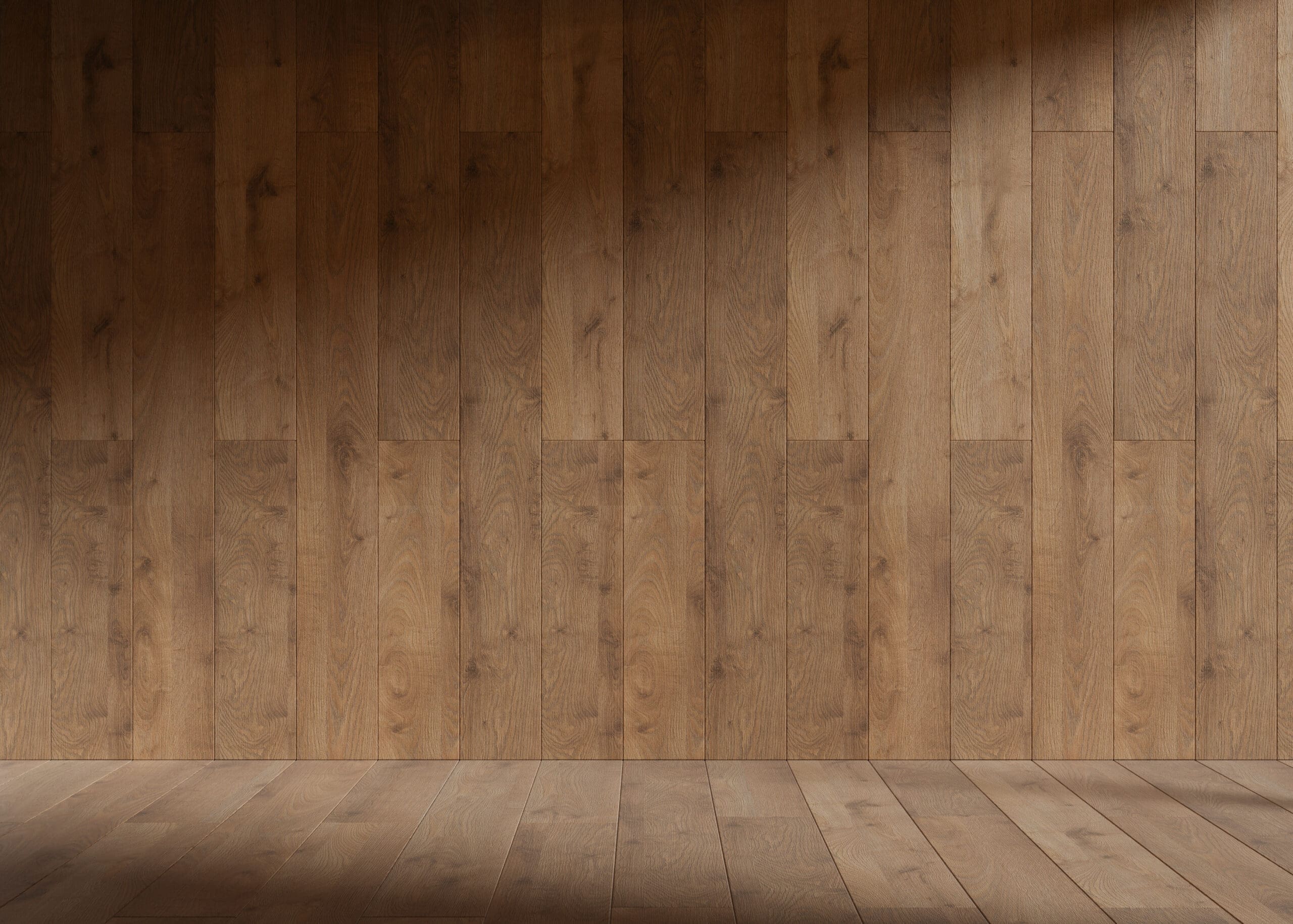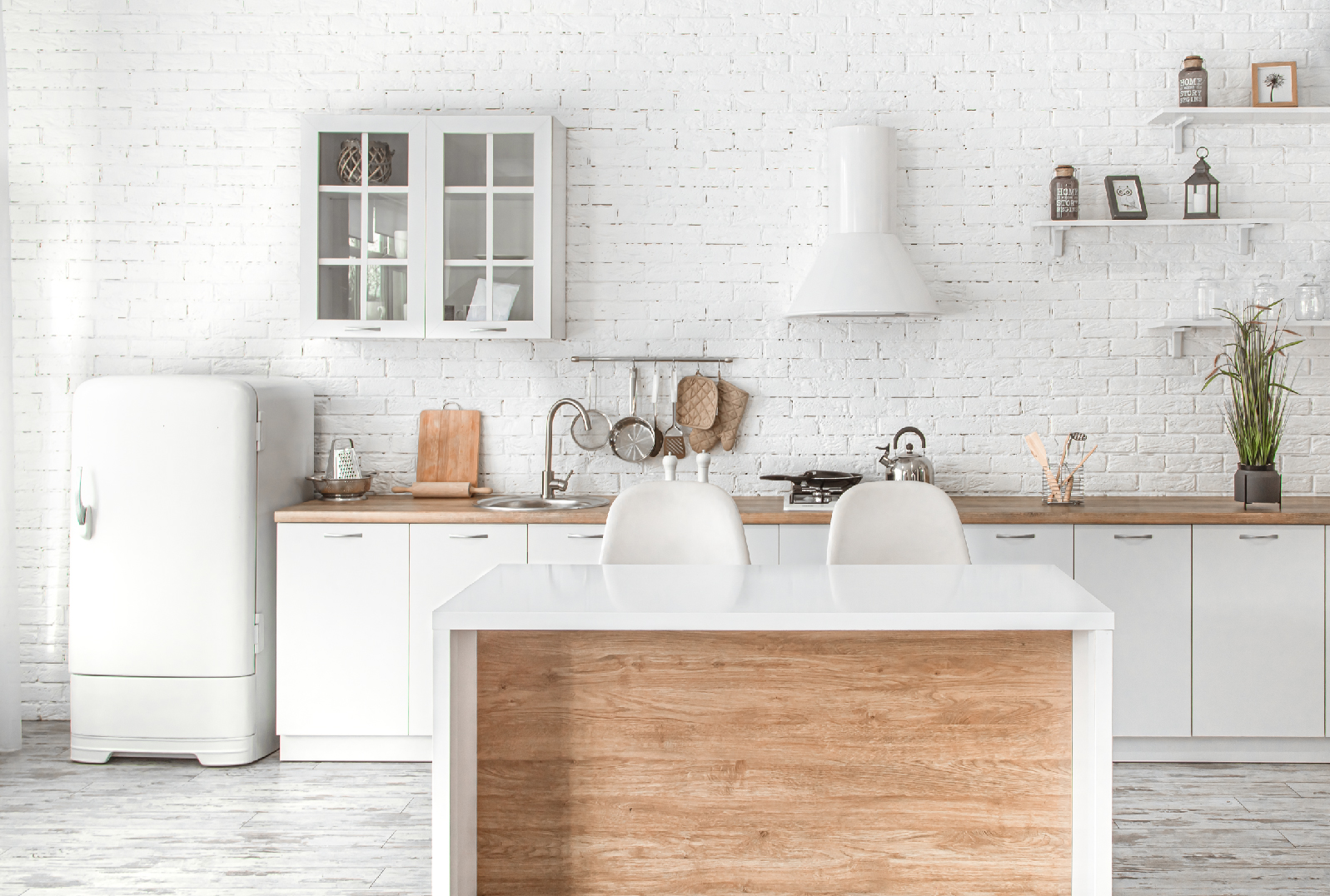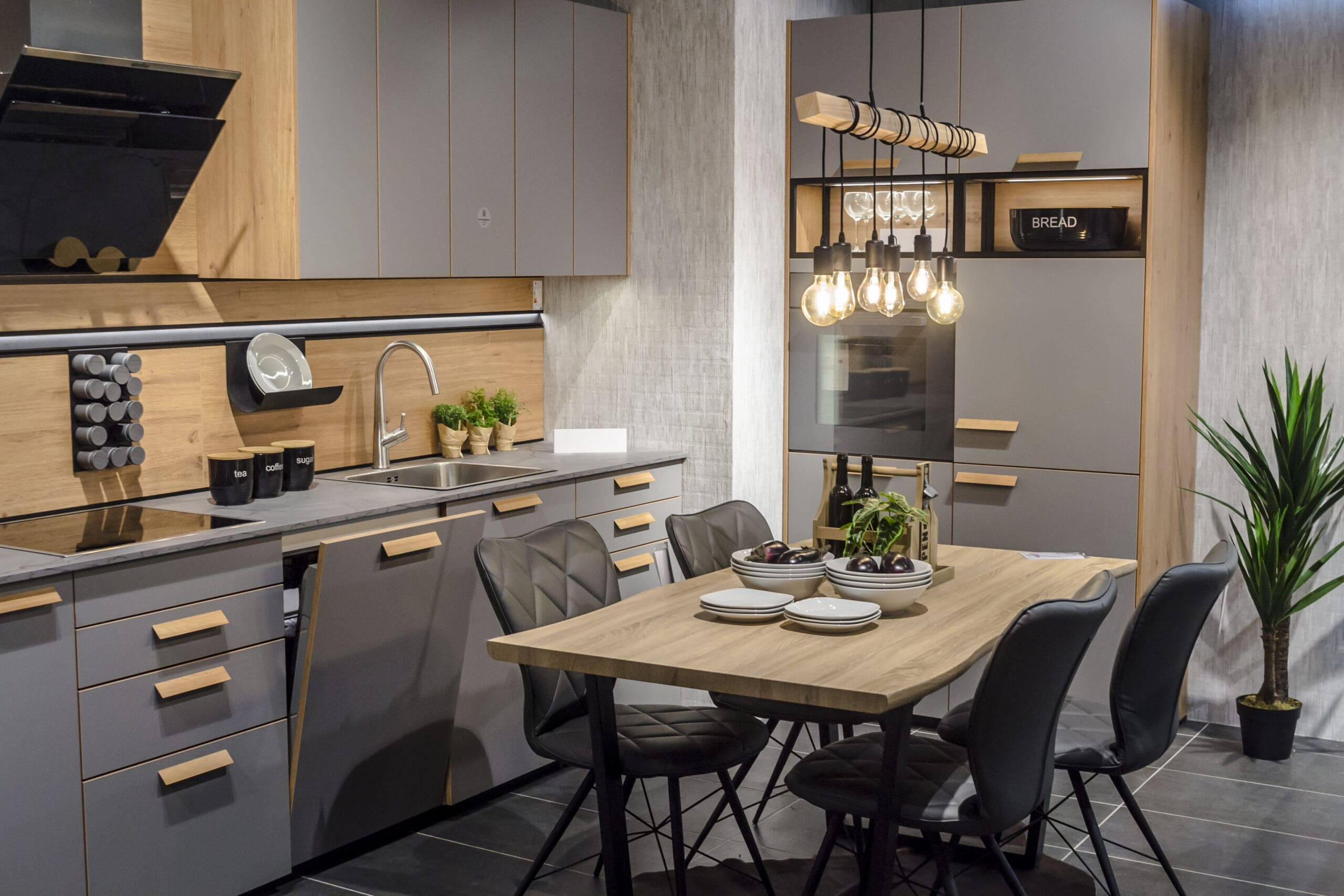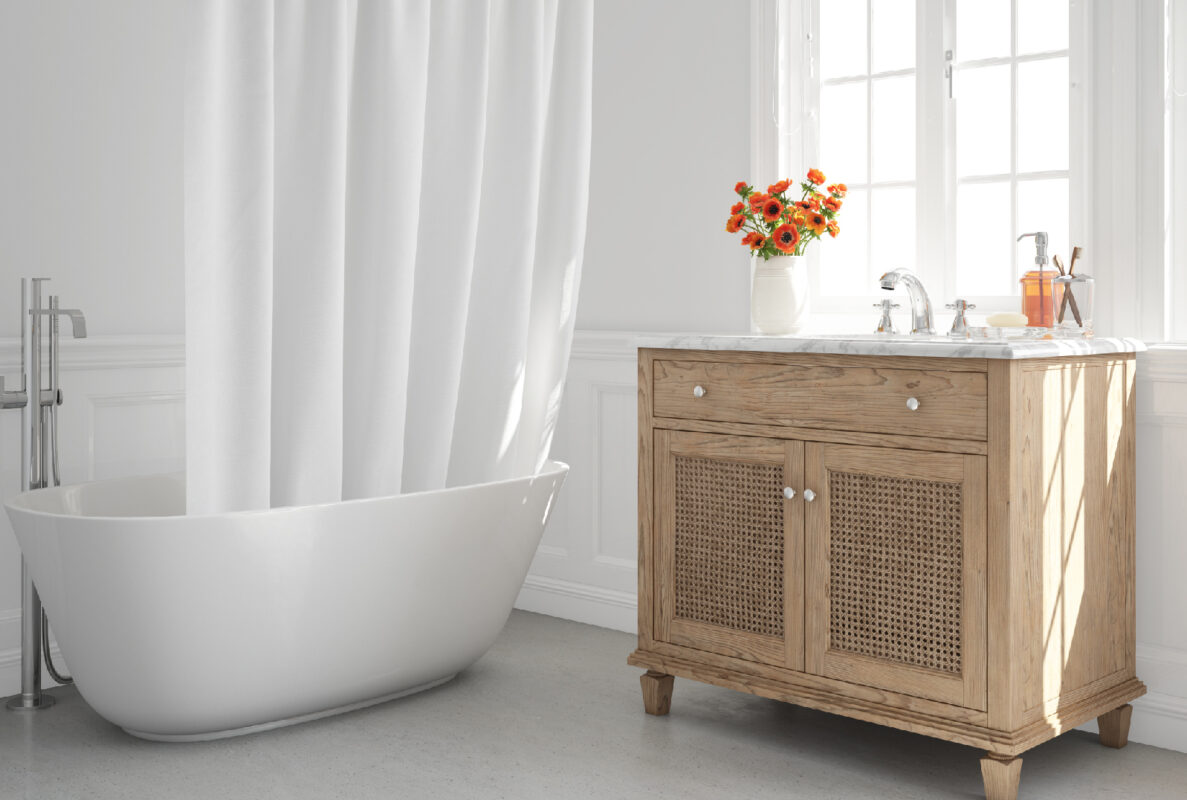That’s great advice! Working with experienced professionals can definitely make the process smoother and ensure that all important details are taken into account. However, it’s important for homeowners to also have a clear idea of their own needs and preferences so that they can provide valuable input and work collaboratively with the professionals. Ultimately, the goal is to create a kitchen that is both beautiful and functional, and that meets the specific needs and lifestyle of the homeowner.
1. Create A Wishlist
the initial step to designing your dream kitchen is to create a mind map and jot down all the features you desire. This is an opportunity for unbridled imagination, where you can contemplate which design style to embrace and what luxurious appliances or gadgets you covet. It’s important to note any shortcomings of your current kitchen setup as well. You can also include more abstract concepts that your designer can assist you with, such as mixed material cabinetry or various countertop finishes. To refine your wishlist, you can browse through interior design sites and social media platforms for inspiration. Magazines and brochures are also excellent resources for staying current on kitchen trends. The more you explore, the better sense you’ll have of your preferred kitchen style, whether it be a classic country or a modern minimalist look.
2. Set A Kitchen Design Budget
It’s crucial to establish clear cost parameters for your kitchen project from the outset. The extent to which you can fulfill your wishlist will hinge on your budget,” suggests the expert. “You must determine a realistic spending limit for your project, factoring in not only the cost of the kitchen itself but also allowances for plumbing, wiring, lighting, appliances, flooring, decorating, labor, and any finishing design touches. Additionally, it’s advisable to allocate an extra 10% as a contingency to account for any unexpected expenses.
3. Consider How You Will Use Your Space
Kitchen design involves more than just arranging the layout to fit the space; it must also revolve around how the room will be utilized, . “Initially, consider your usage patterns and requirements for the kitchen, As modern kitchens have become the central hub of the home, we now design the layout with specific moments in mind, including areas for cooking, dining, entertaining, and sometimes even a workspace. Despite the room’s size, it’s still important to keep the preparation, cooking, and washing areas close together to optimize efficiency.”
4. Measure Up
As the kitchen has taken on an increasing number of roles, including family dining, relaxation, work, and entertainment, having a well-designed layout and sufficient storage is now more critical than ever. However, successfully fitting everything you want in your kitchen relies on accurate measurements,. “When planning your kitchen, it’s important not to get carried away with freestanding elements,”. “It’s essential to precisely measure your floor space to ensure that an island can comfortably fit within your kitchen. When situated in the center, it should leave sufficient floor space for movement and access to the remainder of the kitchen. The area beneath the kitchen island’s countertop is also crucial, as it provides ample storage space for kitchen essentials, such as low fridges and deep drawers.”
5. Consider The Perfect Layout
When designing a kitchen, it’s essential to prioritize practical considerations over aesthetic choices, “Effective planning of an ergonomic kitchen layout and maximizing the available space can significantly enhance the time spent in the kitchen,” “When planning your layout, aim to position your sink, refrigerator, hob, and oven within easy reach of each other, and then consider the storage options for this area. Cabinets and pull-out drawers close to the oven are typically best suited for cooking oils, pots, and pans, while the space near the sink is ideal for dishes. It’s also important to factor in natural light and thoroughfares into your layout planning. For example, seating areas are best situated near windows, and the primary cooking zone shouldn’t double as the main thoroughfare between the hallway and garden via the kitchen.”
6. Make The Right Cabinetry Choice
When planning your kitchen, exploring different cabinet ideas is an exciting part of the process. Consider the overall style and aesthetic you want to achieve, and how it will complement the rest of your home. Gathering images of kitchens that inspire you can help you refine your ideas and find a style that works for you. For a traditional look, focus on the details and finishes of the cabinetry. Painted cabinets are a timeless choice and can easily be repainted for a fresh look. If you prefer a modern, sleek look, consider a flush (flat-fronted) kitchen. However, it’s important to think about whether this style will continue to appeal to you in the future, as cabinetry is a significant investment. You can always update the walls and backsplash for a quick and easy refresh down the line.
7. Consider Cabinetry Proportion, Scale And Symmetry
Balancing functionality and aesthetic appeal is crucial when designing a kitchen, and the size and placement of the cabinetry can significantly impact the overall look and feel of the space. To achieve a sense of symmetry, it’s important to consider the proportions of the cabinetry and strategically place key features, such as a range cooker framed by a chimney breast, in the center. Typically, kitchen cabinets are 600mm wide, but custom options are available to suit individual preferences. When planning the layout, it’s recommended to divide the room into 600mm-wide sections to create a sense of scale. When it comes to tall units, it’s best to extend them up to the ceiling or just below if there is coving, as leaving empty space above shorter units can create an unbalanced appearance. Any additional space can be filled with extra cupboards, which can be useful for storing infrequently-used items such as vases and terrines.
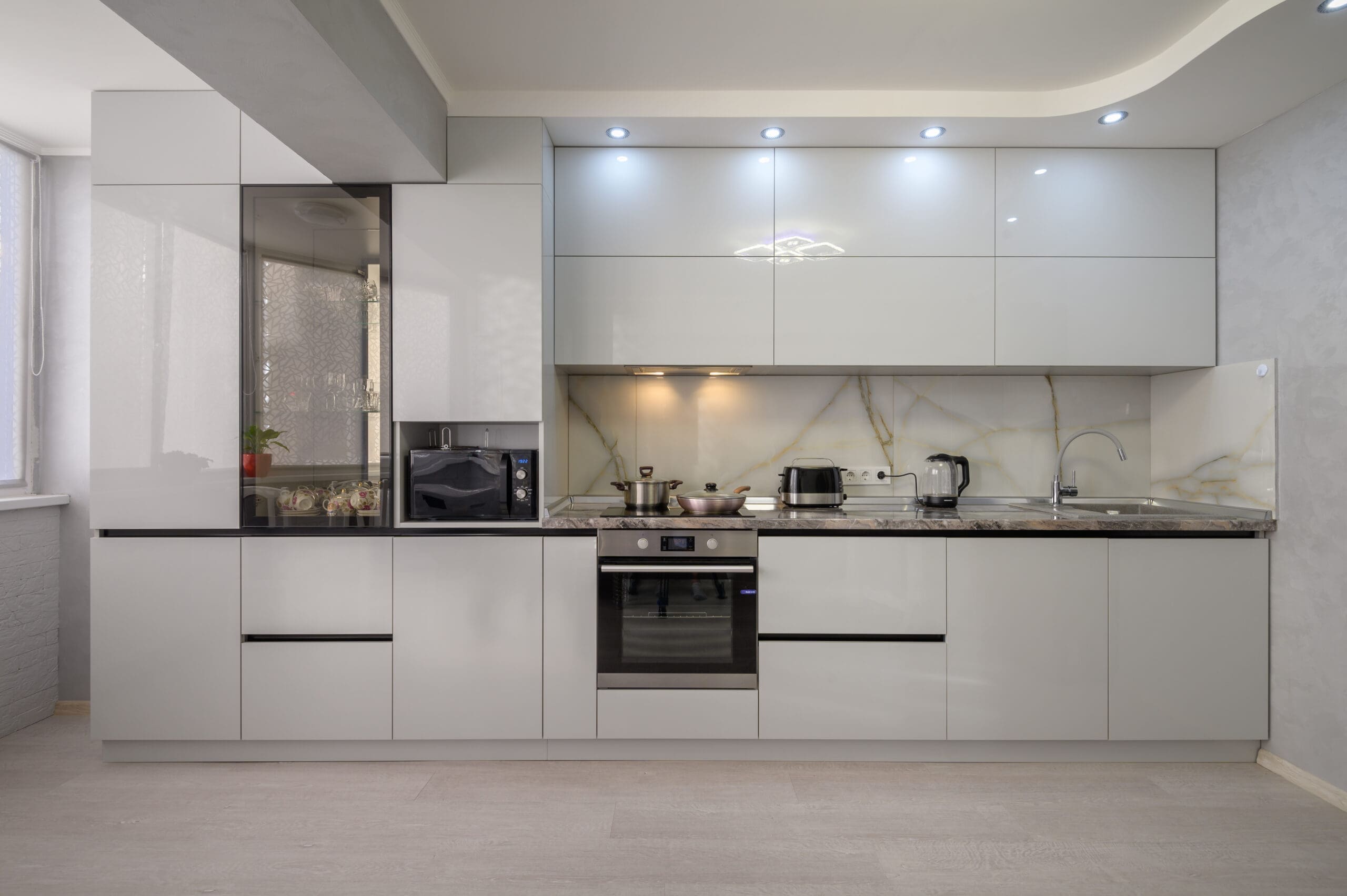

8. Kitchen Colors
When it comes to kitchen design, there are many opportunities to incorporate color in a way that reflects your personal style. Glass-fronted cabinets, for example, offer a chance to play with color by painting the interiors one shade and the frames another, or by swapping out the handles for a new look. To prevent the space from feeling too uniform, consider incorporating an antique china cupboard or sideboard. As the kitchen is often a lively hub of activity, bright and warm wall colors can work well to infuse the space with energy. For a subtler approach, smaller pops of color can be added through accents like painted cabinet fronts, shelving units, or bar stools. With appliances, flooring, window treatments, and cabinets all offering opportunities for color, it’s important to consider your level of commitment before diving in. Painting a single wall is a relatively easy and cost-effective way to introduce color that can be updated as desired.
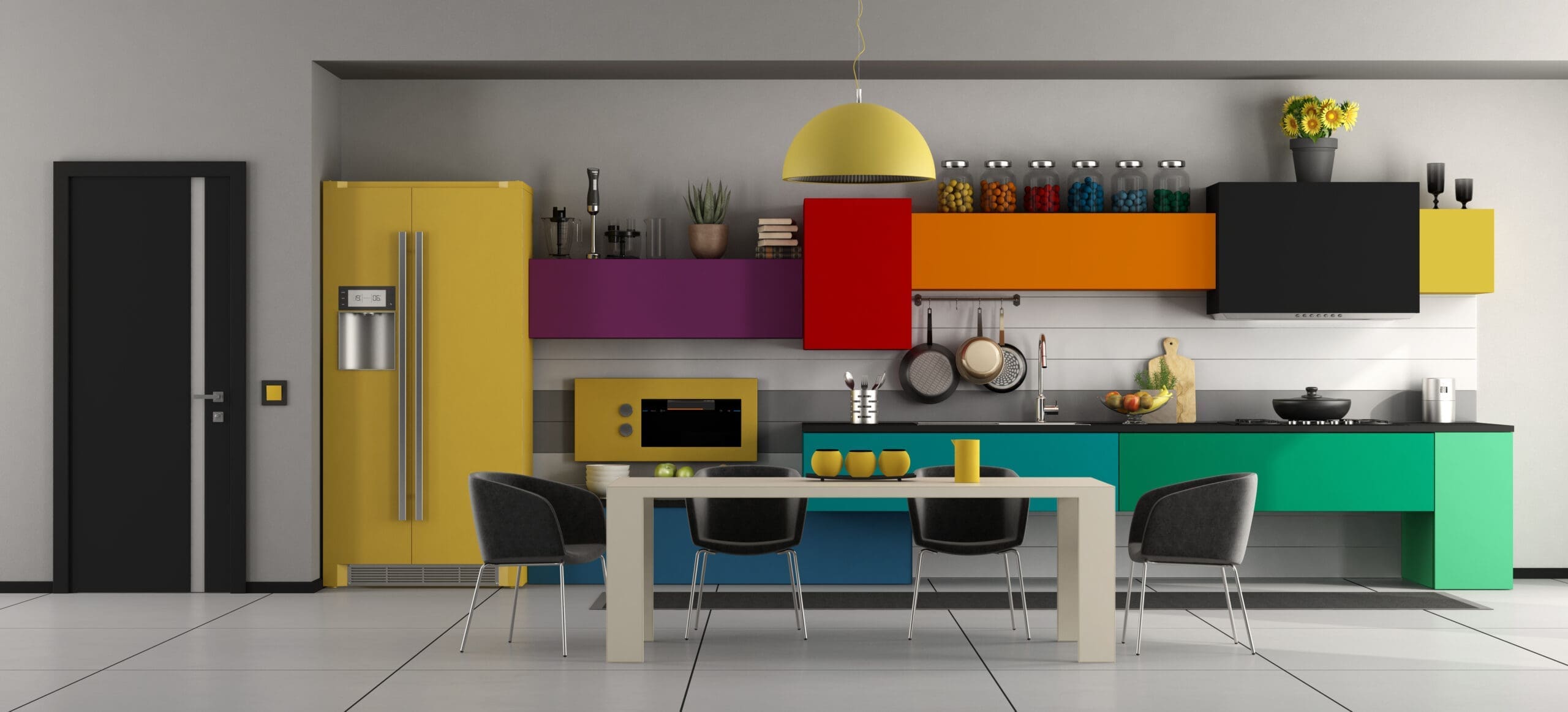

9. Factor In Appliances
When designing a kitchen, it’s important to take into account the various sizes of appliances that may be required beyond the standard 60cm width of built-in ovens, refrigerators, and dishwashers. Wider appliances, such as 76cm-wide ovens, 90cm-wide fridge-freezers, and range cookers up to 1.5m wide, may also need to be considered. Other specialized appliances to consider include warming drawers, steam ovens, combination microwaves, vacuum drawers for sous vide cooking, fridge drawers, dishwasher drawers, wine coolers, and 40cm-wide barbecue grills, teppan yaki, gas, and induction domino hobs. Extractor systems have also advanced considerably, providing a variety of options to choose from such as wall and ceiling-hung hoods, discreet flush-fit ceiling designs, hoods concealed in cabinetry or chimney breasts, downdraft extractors built behind a hob, and hobs with integrated extractors. When selecting appliances and extractor systems, it’s important to take into account the available space in the kitchen, as well as the desired functionality and aesthetic.
10. Include A Boiling Water Tap
All-in-one boiling water taps are becoming increasingly popular and are often replacing standard mixers in modern kitchen designs. These taps come with a tank that varies in size depending on the model. For example, the popular Quooker PRO3 model requires a height of 480mm and a diameter of 150mm, which needs to fit under the sink. These taps provide hot water instantly, making it more convenient for homeowners to make a cup of tea or coffee, prepare meals, or even sterilize baby bottles. As with any new appliance, it’s important to consider the available space in the kitchen and how the boiling water tap will fit in with the overall design and functionality of the space
11. Measure Out Sufficient Countertop Space
When designing a kitchen, it’s important to consider the amount of countertop space required based on individual needs. However, a good rule of thumb is to have at least 600mm of countertop space on either side of the sink and hob for washing and preparing food, as well as a nearby space for hot dishes.
Choosing the right material for the countertops is also crucial since it has a significant impact on the overall aesthetic of the kitchen. Each material has its unique characteristics, so it’s essential to consider how they will suit your lifestyle. Nowadays, there are no hard and fast rules when it comes to selecting countertop materials, and you should choose what resonates with you personally. However, it’s essential to maintain a sense of balance in the design, and avoid using too many competing bold looks. For example, if you opt for a heavily veined Verde Green granite for the island surface, it might be best to pair it with a more subdued material for the other countertops to maintain a cohesive design.
1- Quartz is a durable material that is made by mixing quartz with pigments and polymers. It is more resistant to scratches and stains than most natural stones, as well as being heat-resistant and easy to maintain. One of the benefits of quartz is that there are many options available for achieving a marble look. Quartz is also consistent in appearance, so what you see in a sample is generally what you can expect in your home. This is especially useful if you have a large kitchen and want a uniform surface. It is also worth mentioning that some newer quartz ranges are made using a significant amount of recycled material.
2- Real marble is a porous material, which means it can absorb liquids and is prone to staining. It is also softer and more prone to scratches than other materials commonly used for countertops. For these reasons, it is generally not recommended for use as a countertop surface, especially in high-traffic areas like kitchens. Instead, alternatives like quartz, granite, and engineered stone are often recommended for their durability and stain resistance.
3- Porcelain is a popular option for kitchen countertops because of its durability and resistance to heat and stains. It is also available in a variety of patterns and thicknesses, including book-matched and vein-matched designs for a striking appearance. And unlike quartz, porcelain can be manufactured in thinner formats, starting from 12mm.
4- Granite is a natural material, and each slab will have unique patterns and variations. It is a popular choice for kitchen countertops due to its durability and resistance to heat and scratches. However, granite is porous and needs to be sealed properly to prevent stains and bacteria growth. With proper maintenance, granite countertops can last for many years.
5- Solid surface materials like Corian are a popular choice for kitchen countertops due to their non-porous and durable nature. They are also smooth and warm to the touch, making them a comfortable surface to work on. One of the benefits of solid surface is that it offers design flexibility, as it can be moulded into organic shapes with a seamless finish, unlike natural stone materials such as quartz, granite, and porcelain, which require joints for sizes greater than their maximum slab dimensions. Solid surface materials are available in a wide range of colors and finishes, making it easy to find an option that suits your personal style.
6- timber is a popular choice for kitchen worktops due to its warmth and versatility. It can be used in a variety of kitchen styles, from traditional to contemporary, and comes in a range of species with different grain patterns and colors. Timber worktops require regular maintenance, such as oiling or waxing, to protect the wood and maintain its appearance. However, with proper care, they can last for many years and add character to a kitchen
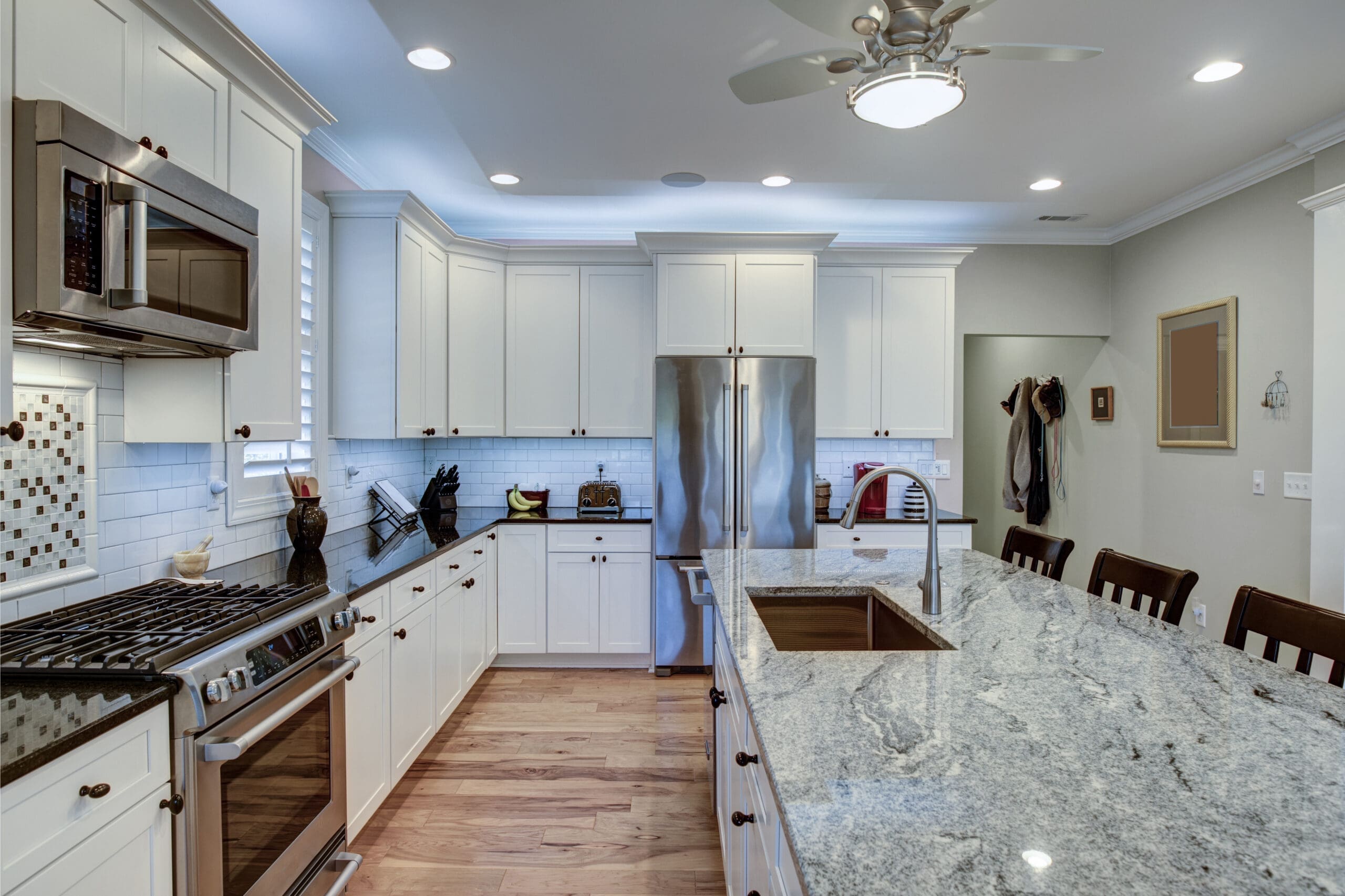

12. Plan In A Kitchen Island
If there is enough space, kitchen island ideas can be an ideal addition to any kitchen. They have so many uses, from additional prep surface, a place for the sink, a spot for the hob, somewhere for drinks and a place to cook in front of guests.
A good size island can range from about 2m to 3m long and 1.1m to 1.4m wide (any wider tends to create wasted space in the centre). Allow at least 1m of space around the island, more if the route is to be used as a walkway, and if you have seating at the island, remember that not all bar stools tuck right in, so take this into account when measuring from the back of the island to the nearest wall or cabinet.
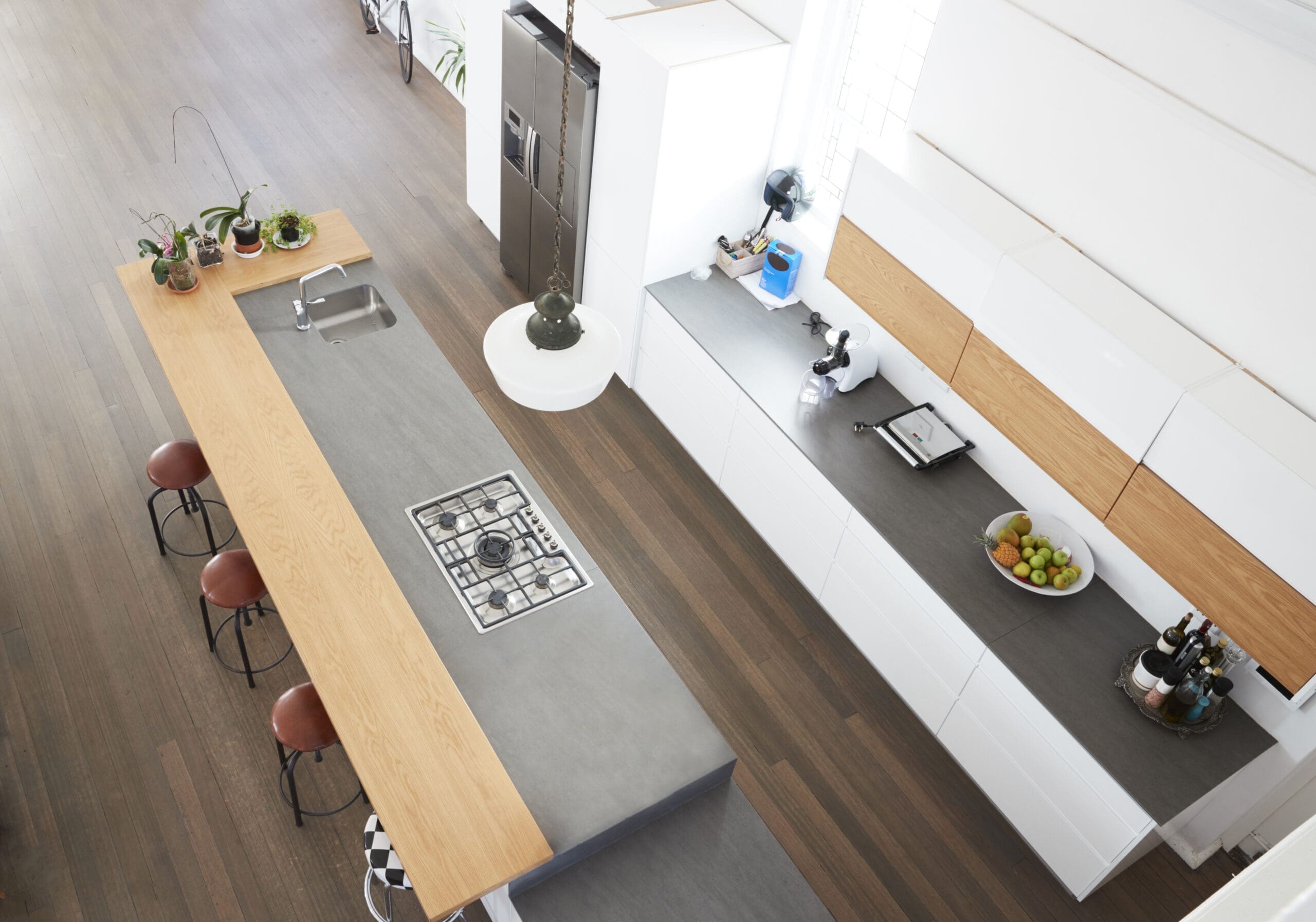

13. Work Out What Kitchen Storage You Need
You can also consider incorporating pull-out baskets or drawers for storing food items, as well as a tall pantry unit for storing dry goods and canned foods. It’s also a good idea to have a designated space for your cooking utensils and knives, such as a utensil drawer or magnetic knife holder.
Another important aspect of kitchen storage is maximizing vertical space. This can be achieved by installing tall cabinets or shelves, or even by hanging pots and pans from a ceiling-mounted rack.
When planning your kitchen storage, it’s important to consider your individual needs and habits. Take stock of the items you currently have and how you use them, and plan your storage accordingly. This will help ensure that your kitchen is not only stylish, but also functional and practical for your specific needs.
That’s a great idea for organizing a pantry! It can be helpful to have a system in place for storing and labeling items to make it easier to find what you need quickly. Using door racks and glass jars for different items is a smart way to save space and keep everything organized.
A breakfast cupboard or coffee station is a great addition to any kitchen, providing a convenient and organized space for your morning routine. It’s important to consider your specific needs when planning this area, such as the size of your coffee machine or the number of cups you typically use. Bi-fold doors are a great option for easy access, and incorporating an integrated fridge drawer for milk or other breakfast essentials can make the space even more functional. Don’t forget to consider storage for other breakfast items, such as cereals, breads, and spreads, to keep everything in one convenient location.
That’s a great tip! It’s always a good idea to maximize the use of space in a kitchen, especially in smaller rooms. Shallow cupboards can be a great solution for storing items that are not used as frequently, such as small appliances or baking trays. Another option is to use pull-out drawers or wire baskets that can be installed in the same 540mm deep cupboards, but allow for easier access to items stored at the back.
These are all great small kitchen storage ideas! Another idea to consider is using the vertical space in your kitchen by adding shelves or hooks to the walls for hanging pots, pans, and utensils. Magnetic knife strips can also be a space-saving solution for storing knives. Additionally, using drawer dividers and organizers can help keep your utensils, cutlery, and small appliances neatly organized and easily accessible. And don’t forget to make use of the space above your cabinets by adding decorative baskets or boxes to store less frequently used items.
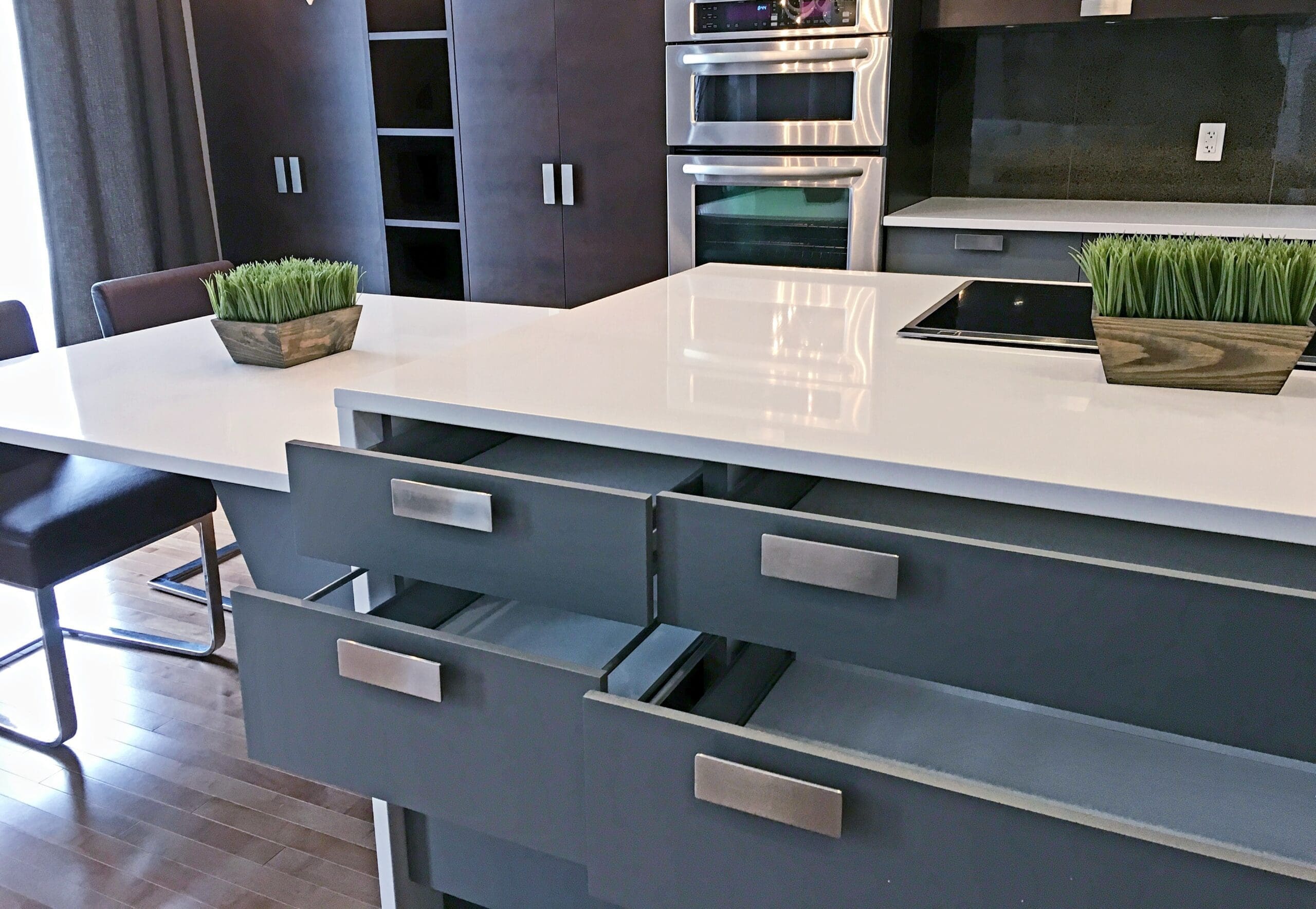

14. Plan In Kitchen Lighting
The success of a kitchen’s design can be greatly influenced by its lighting choices, which can help create a specific mood and atmosphere, ranging from dim lighting for dinner parties to bright lighting for cleaning and working. As kitchens nowadays are expected to be both aesthetically pleasing and practical, having appropriate lighting ideas is crucial for achieving this balance.
When planning the layout of a space, it’s important to consider lighting early on, not just for wiring needs, but also to anticipate any issues that may arise as the project progresses. For instance, if using LEDs under wall cupboards to illuminate the work surface, it’s essential to ensure they are included in the plans. Otherwise, alternative lighting options must be considered, such as wall lights on adjustable swing arms that can be angled to suit specific needs.
Ceiling downlights that are adjustable and can be dimmed are a commonly used option for providing general lighting in kitchens. These lights offer the flexibility to increase their brightness level when cleaning the space, while also allowing for a softer ambiance by dimming them down when desired
Although it can be useful to begin with a downlight grid layout to achieve an even distribution of light, it’s important to keep in mind that adjustments may be necessary to account for features such as steel joists, skylights, and even TV screens. Additionally, it’s important to avoid placing downlights too close to pendants or adjacent to wall cabinets. The grid should be treated as a starting point that can be tailored to meet the specific needs of your kitchen space.
Black track lights have become a popular lighting option due to their ability to provide ample illumination and add a touch of 1970s style to a kitchen. Instead of using a pendant, they can be used as a substitute, or a single pendant can be chosen for the island rather than a group of pendants. By selecting a large and visually striking pendant, such as one that is suspended over the island to one side or above a breakfast bar, it can act as a piece of art and add to the overall aesthetic of the kitchen..
It’s important to also think about practical lighting solutions for the inside of pantries, breakfast dressers, and wall cupboards, which should ideally be equipped with switches that turn on the light automatically when the door is opened and off when closed. Lighting can also be used inside glazed cabinets to highlight glassware as a decorative feature. Additionally, placing a simple table lamp on a console or dresser can help to connect the kitchen with the dining or living areas in an open plan space..
Plinth- or cornice-level lighting is not commonly used in kitchens, as it can be unnecessary and give the room an unappealing futuristic feel. However, in some cases, such as when cabinetry doesn’t reach the ceiling, adding a soft glow of light can balance out the look and provide illumination to darker areas.
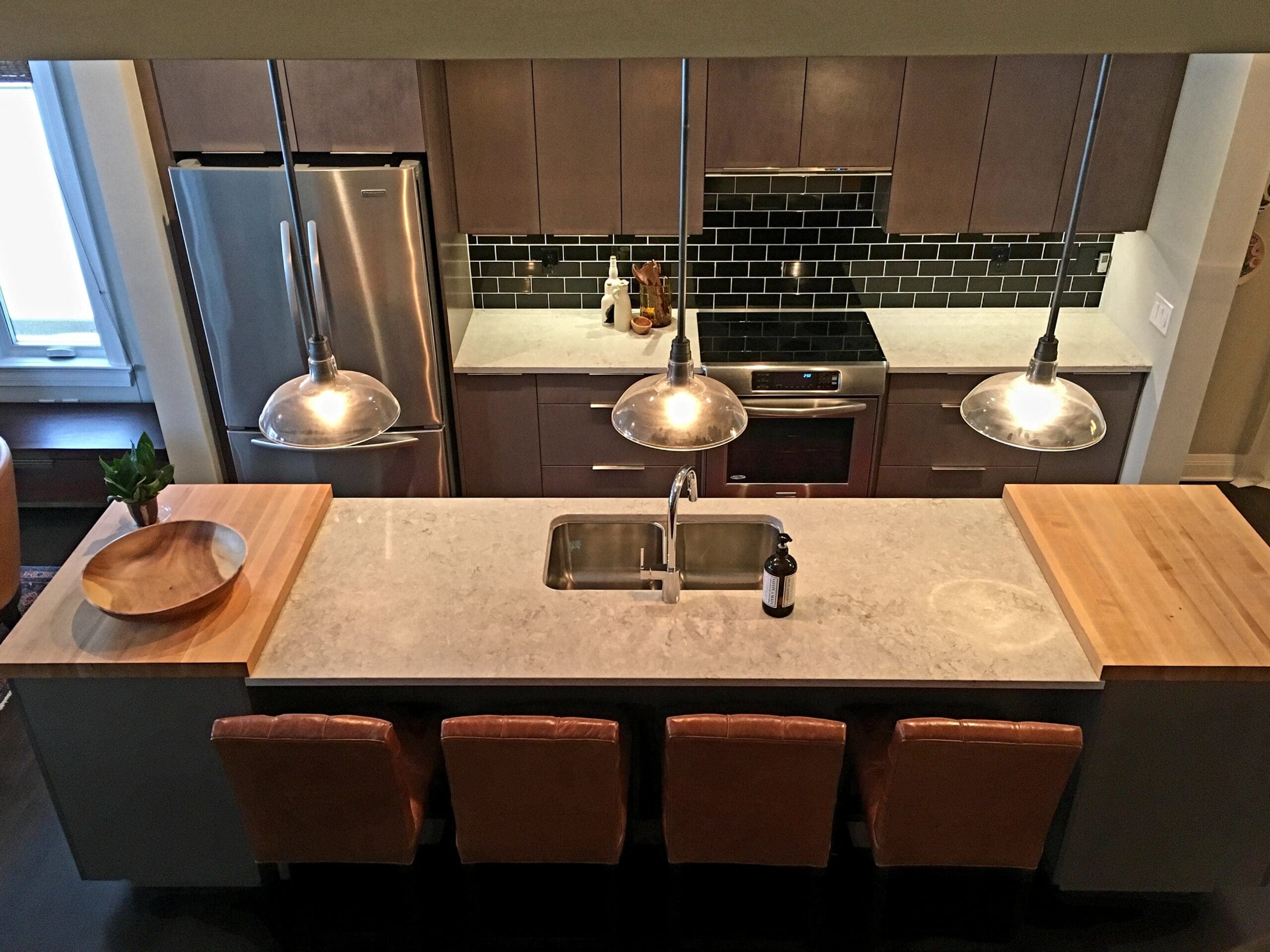

To simplify the process of adjusting lighting, it is advisable to use a smart control system and preset your preferred lighting scenes. This is especially useful in modern, multi-functional kitchens that serve as more than just cooking spaces, but also as offices, dining areas, and even classrooms.
To effectively light the different areas and activities in the kitchen, task lighting that is specific to each workspace is crucial. Pairing practical lighting with statement pendant shades and dimmer switches can also create an inviting ambiance for dinner parties. Be creative with different lighting features, colors, and materials to add a unique touch to your kitchen.
Planning your kitchen lighting should be a part of the early stages of layout planning to avoid costly mistakes and limited lighting options down the line. According to experts, the ideal time to install a new lighting scheme is before redecorating or during the initial stages of a kitchen remodel.
15. Choose Kitchen Flooring
Choosing the right flooring for your kitchen is an important aspect of the design process that should be considered during the planning stage. It is essential to select a material that is durable and easy to maintain, while also complementing the style of your kitchen.
When deciding on the best material for your kitchen floor, it is important to consider your budget as well as your preferences for aesthetics and practicality. While some materials may be more costly, they may offer unique features that enhance the overall look and feel of your kitchen. Ultimately, the choice of material will depend on your personal preferences and priorities.
Porcelain tiles
In modern times, porcelain tiles have become the go-to material for kitchen flooring due to their durability, resistance to stains and scratches, and compatibility with underfloor heating. Additionally, their popularity is partly due to the vast range of designs, colors, and formats they are available in.
Porcelain tiles that mimic the look of natural materials such as stone, wood, concrete, and terrazzo are particularly favored. In fact, some porcelain tile reproductions are so accurate that they can be difficult to distinguish from the real thing.
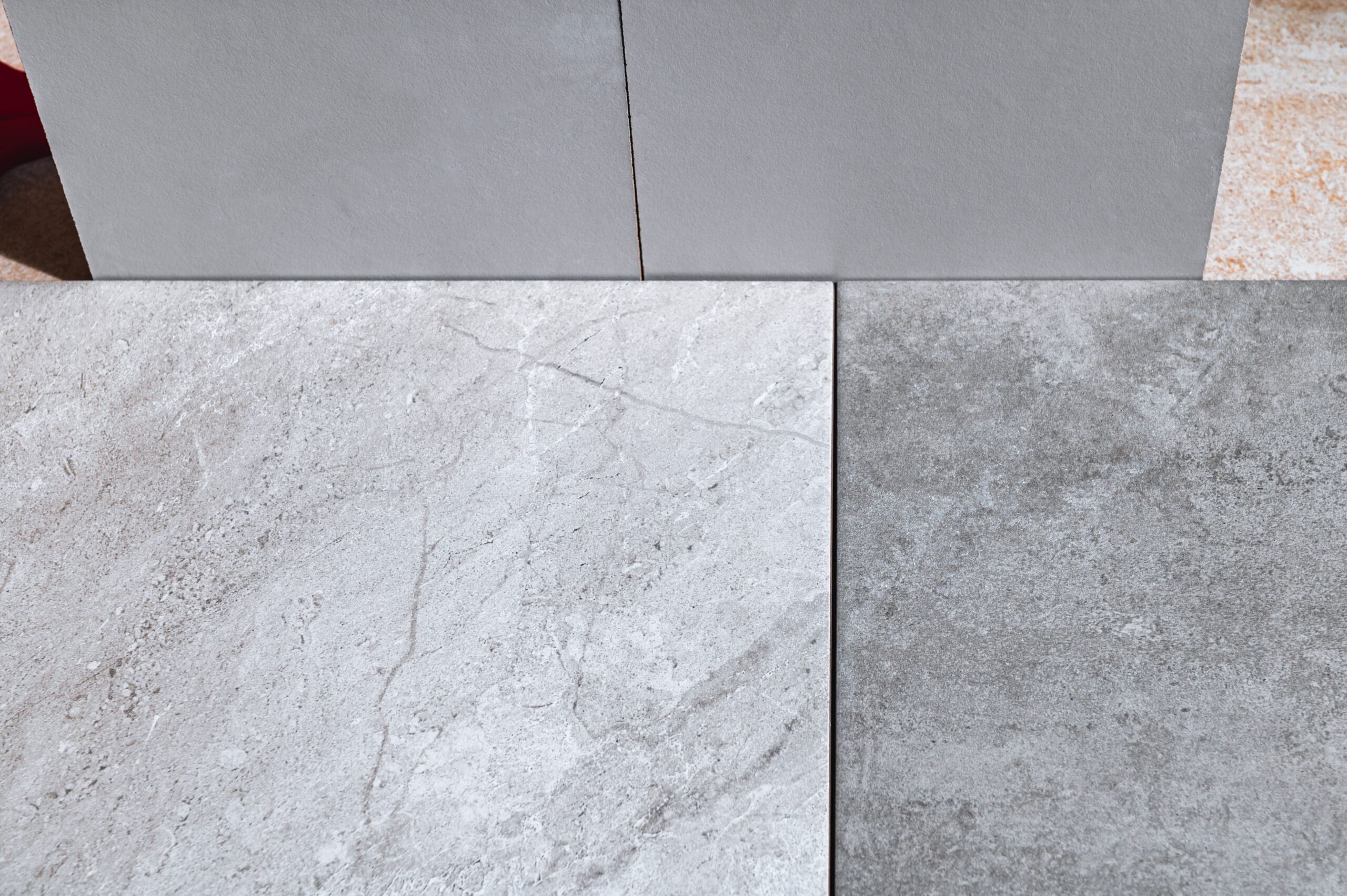

Stone-look tiles
A trend in kitchen flooring design is the use of stone-look tiles that create a warm and relaxed atmosphere in the room. Limestone-effect porcelain tiles with a soft, matte finish are an excellent choice as they offer a calming effect and are easier to maintain than polished or textured tiles.
To add a sense of grandeur to your kitchen, even with a neutral tile, consider using large format tiles such as 1.2 x 2.4m. This can create a dramatic effect and make the space feel larger.
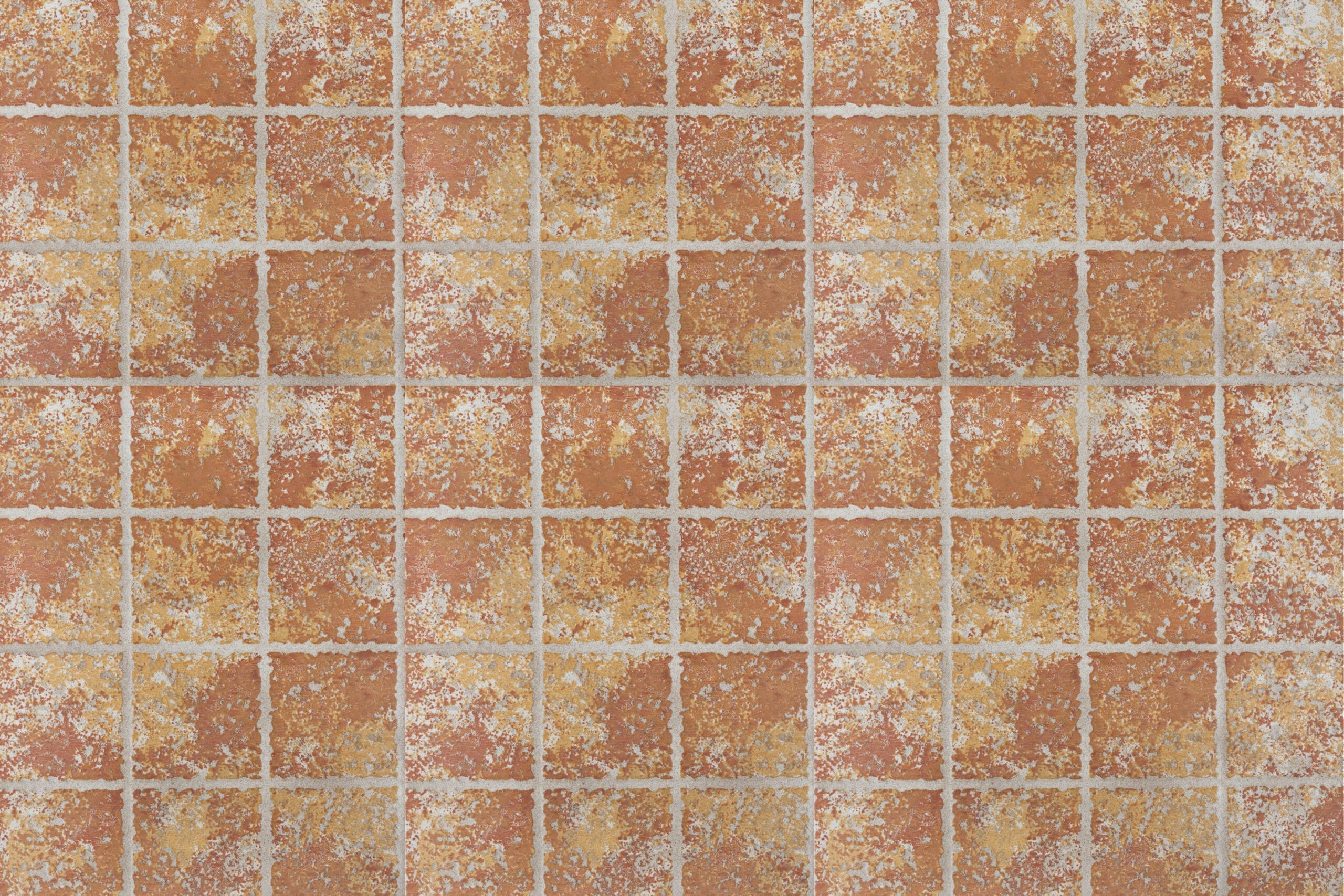

Wood-look tiles
Porcelain tiles that resemble the look of wood are also popular for kitchen flooring. These tiles come in plank shapes and offer a sense of character and movement to the space. In the past, the flat printed surface of these tiles made it clear that they were not real wood planks. However, modern manufacturing techniques now involve pressing a woodgrain pattern into the surface of the tile before printing, resulting in a more realistic texture that mimics the look and feel of real wood.
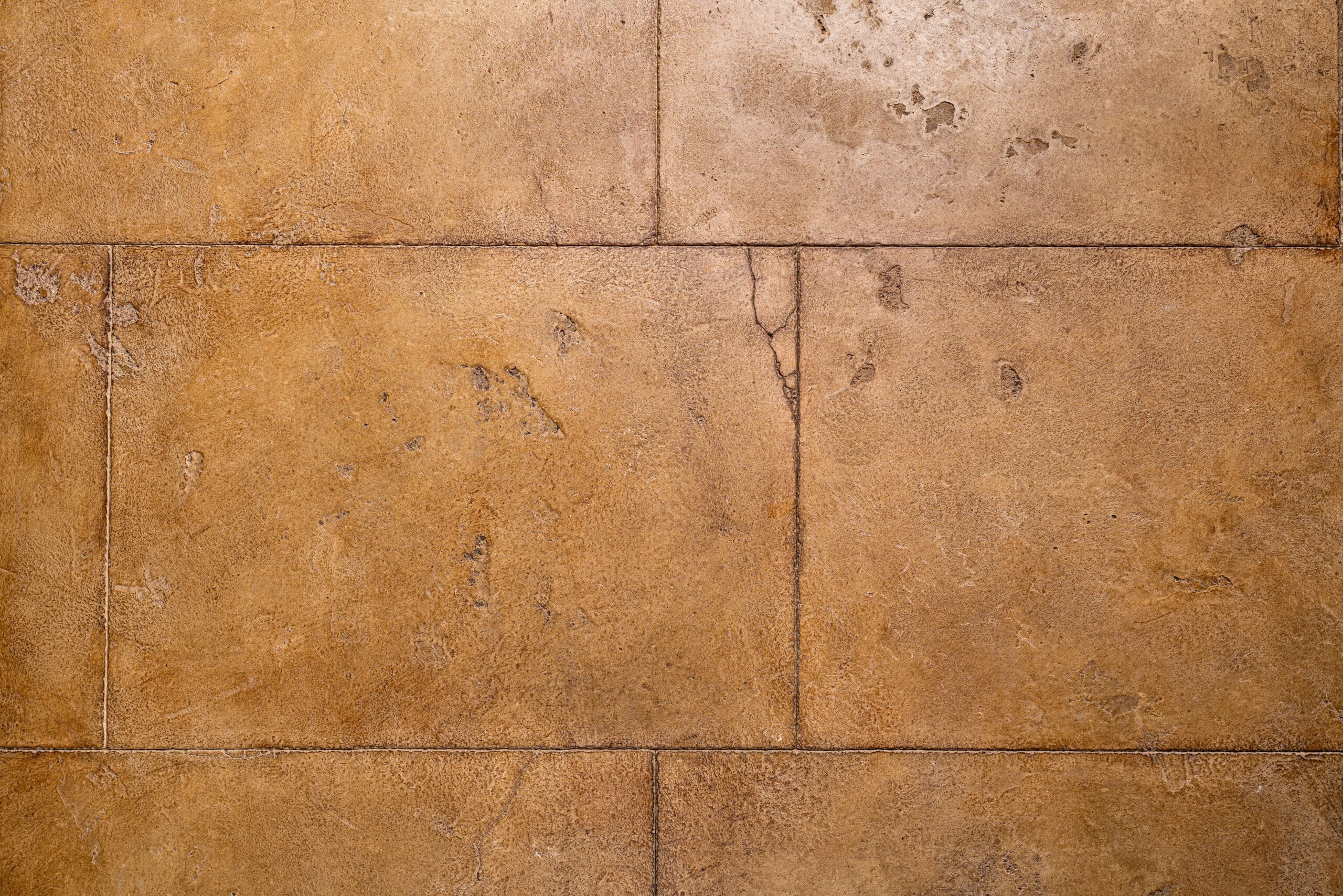

Encaustic look tiles
If you’re looking for the soft colors and intricate patterns of encaustic (concrete) tiles but don’t want the high maintenance they require, you may want to consider using encaustic-look porcelain tiles like Puzzle. These tiles offer the same look and feel as encaustic tiles without the upkeep.
Alternatively, you can create a bespoke floor by combining different shapes, such as triangular tiles in a range of colors. This allows for endless design possibilities and adds a unique touch to your kitchen flooring.
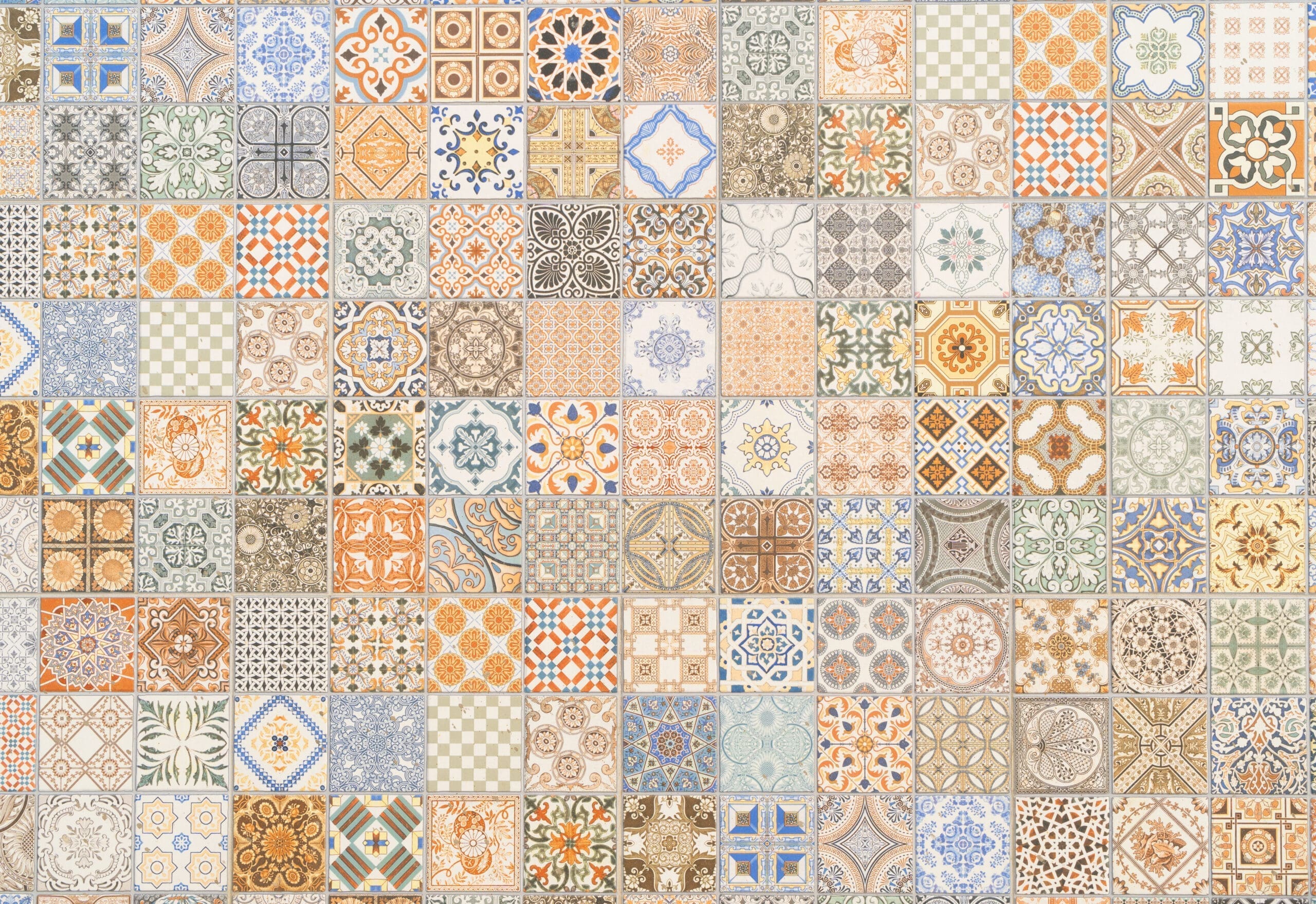

Real stone
For those who prefer the natural beauty of real stone, materials like limestone are available for kitchen flooring. However, it’s important to consider that natural stone is porous and may become stained or weathered over time. To maintain its appearance, regular upkeep will be necessary to keep it looking its best.
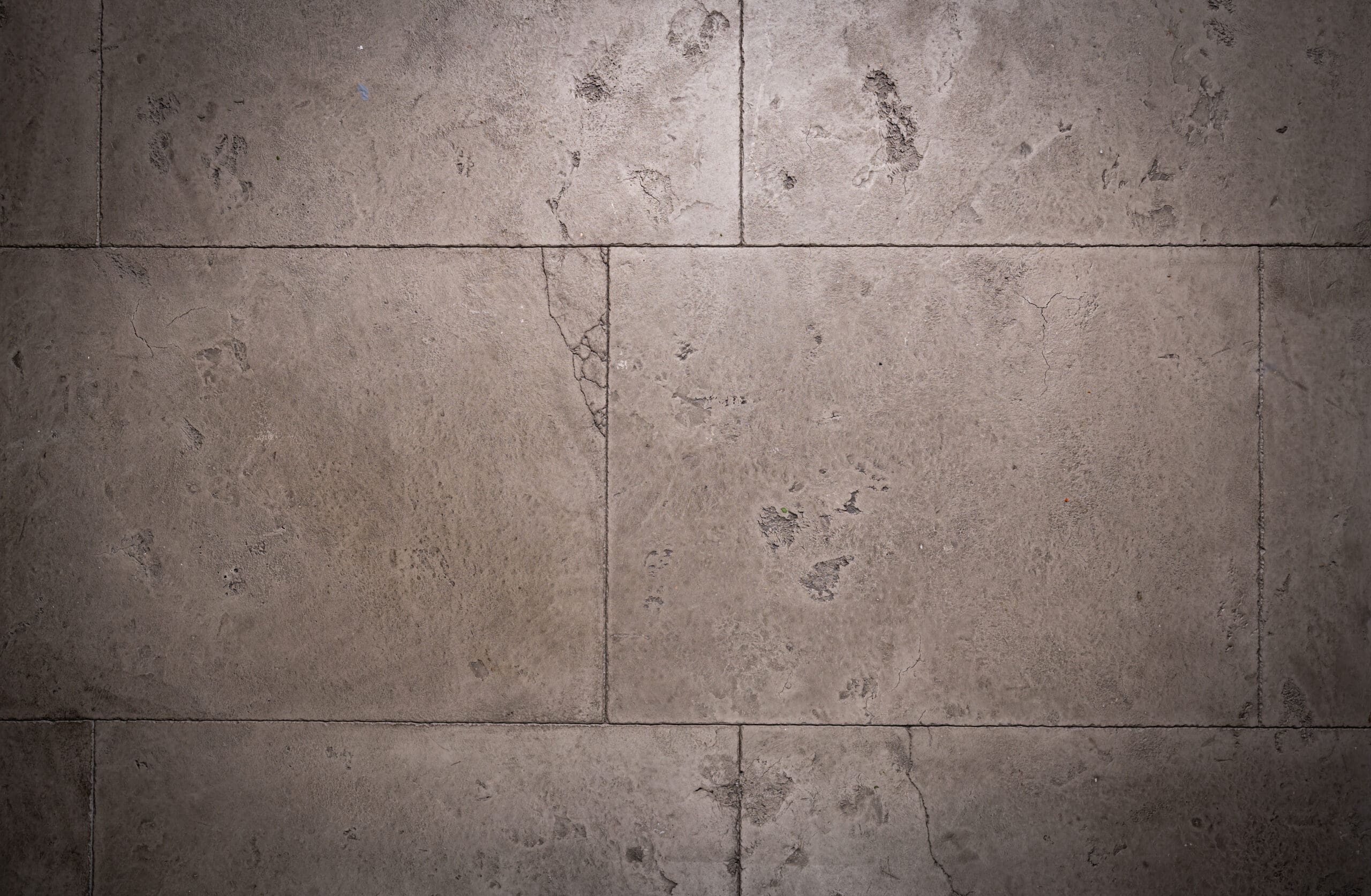

‘Real wood
the same applies to wood, attractive for its unique characteristics and warmth.
‘Engineered timber
Engineered timber is known for its stability and durability, and is often a popular choice for kitchen flooring. However, it’s important to note that both engineered timber and solid wood flooring should be protected from standing water to prevent damage and maintain their longevity.
